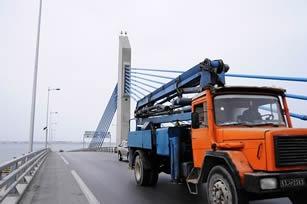Recent economic reforms are set to enhance further the investment climate in North Africa.
Faced with persistently high unemployment, particularly among college graduates, Tunisia has been working with the International Bank for Reconstruction and Development (IBRD) to improve its global competitiveness and accelerate economic growth. Since the late 1990s, Tunisia has become one the leading economies in Africa in terms of competitiveness and, between 1996 and 2007, saw a doubling in exports of goods and services.
In the half century since independence, Tunisia has made major economic and social advances, reflected in the combination of a quadrupling of per capita gross domestic product (GDP), an increase in life expectancy to near developed-country levels, and a drop in poverty to less than four per cent of population. The creation of an offshore regime in 1971 to reduce the anti-export bias inherent in the strict import-substitution policy of the 1960s significantly contributed to economic performance. The offshore regime grants several fiscal and financial incentives to exporting firms, including duty-free imports of raw materials and equipments entering the production, a 10-year tax holiday, and free repatriation of profits. It allowed Tunisia to attract foreign direct investments, break into global manufacturing chains, and create massive jobs in the clothing as well as other manufacturing sectors.
It was evident, however, that a hybrid trade policy stance combining heavy protection and control of the domestic economy with an “enclave” (or offshore) business climate was inconsistent with robust long term-growth and job creation. As students leaving university began to struggle to find work in the early 1990s, the unemployment rate began climbing, reaching 15 per cent in 1999. The jobless rate declined slightly since then but has remained around 14 per cent. Given the rapid pace at which young university graduates enter the labour market, it became evident that beyond foreign investment in the offshore sector, the country needed to enhance the efficiency and competitiveness of the domestic economy to avoid a significant deterioration of the employment situation.
Initiating economic reform
The Bank supported the government’s reform programme that encompassed trade and logistics reforms, administrative and regulatory reforms to enhance the investment climate, the creation and empowerment of a competition council, reform of the banking and insurance sectors to increase access to finance and liberalization of key backbone services such as maritime transport, port and telecommunication sectors to reduce transaction costs and the attractiveness of the country to investors.
Through a range of development policy loan programmes with IBRD, Tunisia has boosted its global competitiveness and seen exports double over a little more than 10 years. The best illustration of Tunisia’s improved competitiveness is its total factor productivity growth, which often drives investment. Total factor productivity rebounded from a negative rate in the 1980s to 1.24 per cent in the 1990s and 1.40 per cent in 2000–2006. While productivity growth in 2000–2006 remained below South Korea’s and Malaysia’s, it represented one of the best performances in the Middle East and North Africa region.
Investment flows
Furthermore, exports of goods doubled in value between 1996 and 2007, while annual foreign direct investment flows increased steadily, averaging 2.2 per cent of GDP in 1996–00, 2.6 per cent in 2002–05 and 5 per cent in 2006–2008. Tunisia ranked as Africa’s most competitive country in Davos’ 2009 Global Competitiveness Report. All this translated into a five per cent growth since the mid-1990 despite recurrent internal (e.g., droughts) and external shocks.
Toward the Future
Tunisia needs to further boost private investment and productivity growth in order to reach between six and seven per cent growth and to reduce unemployment. While foreign direct investment inflows have been continuous, domestic private investment has increased only from 12.3 per cent of GDP in 1997 to 14.2 per cent of GDP in 2007. This level of private investment is below that attained by other successful emerging countries and is insufficient to sustain the productivity growth that has driven recent economic expansion. The world’s fastest growing economies have indeed displayed high investment rates. Thus there is much scope in further enhancing the business climate and trade integration through reforms that the Bank could support through policy-based lending. Reforms that target competition issues, such as anticompetitive practices and unfair competition that continue to hinder investment will be particularly important.





